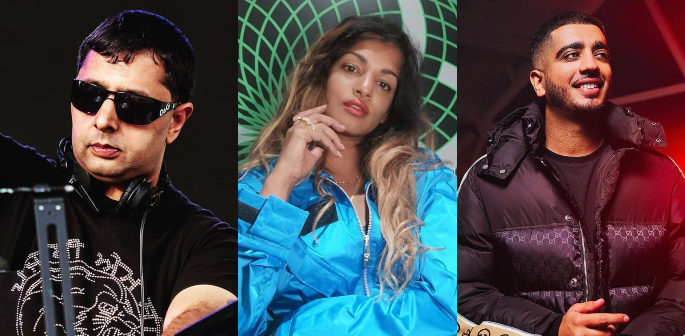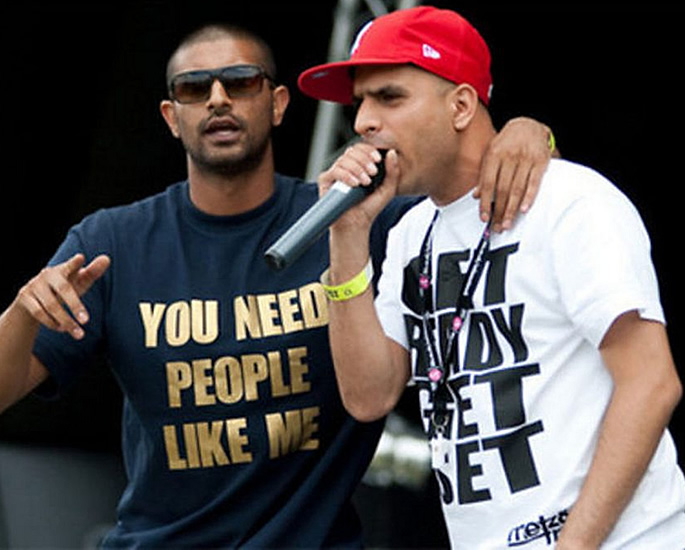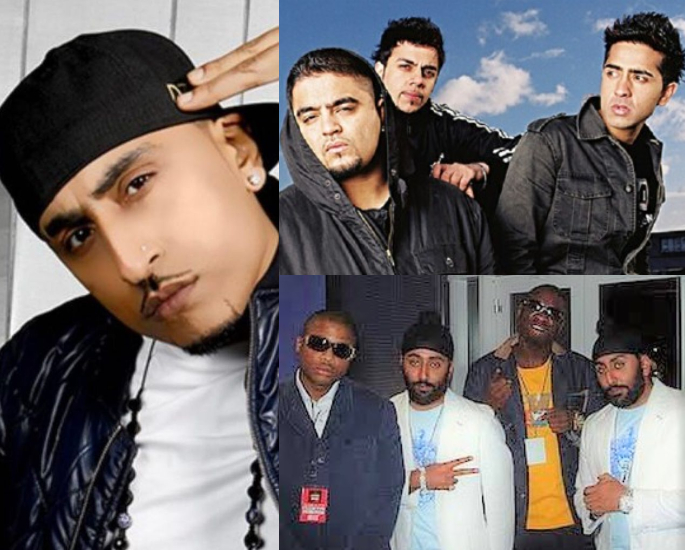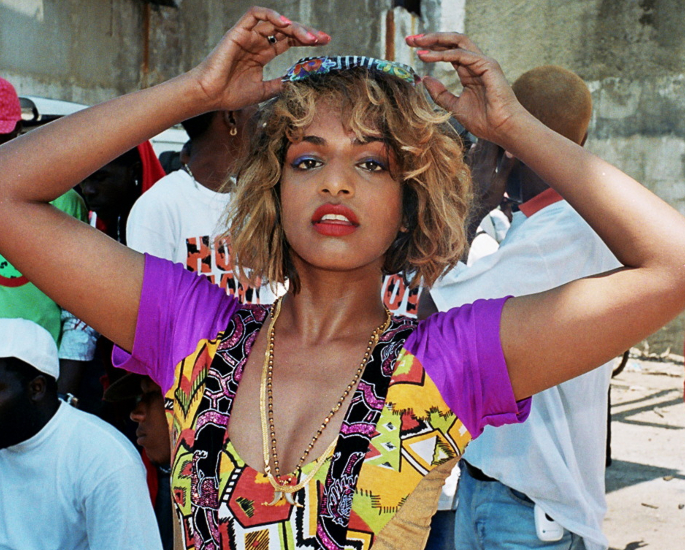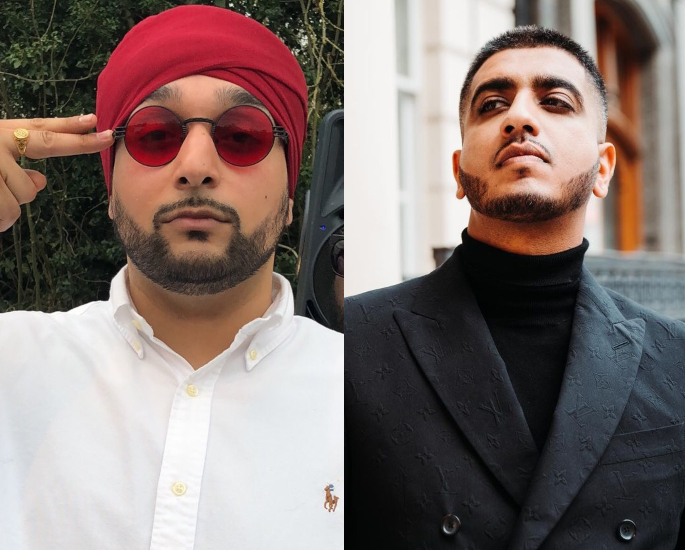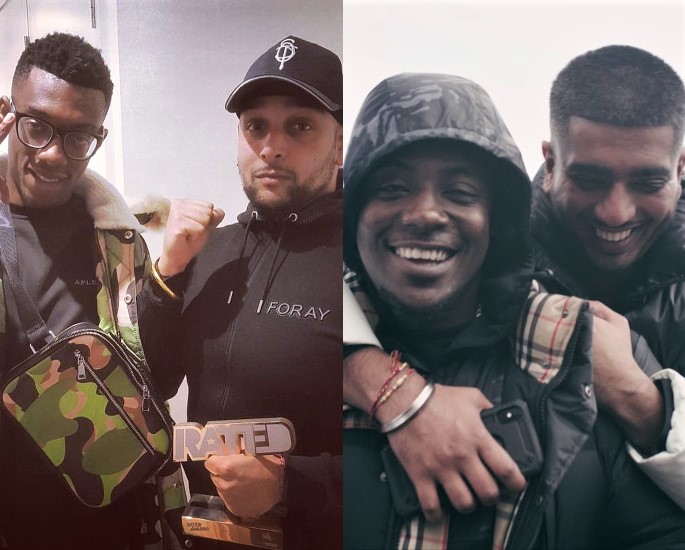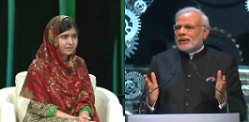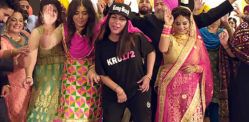One of the most symbolic songs of its decade.
A phrase famously rapped by Birmingham artist MIST, “Big up all my apna’s, kala’s, gora’s”, is one that resonates in the UK Rap scene.
However, how did Punjabi seep its way through a UK Rap record, especially one sung by a Black British rapper?
This is one result of the South Asian influence on British music and how artists of this background have helped evolve the culture of UK Rap.
The acceptance of Asian culture within British music is something that is more prominent in British Rap today compared to previous years.
Fans are now witnessing a new wave of South Asian influence.
Producers such as Rude Kid, Dr Zeus and Sevaqk have been carving their unique melodies for many years, allowing Asian tones to resonate through their records.
Culturally, UK Rap used to cater to Black British audiences but the slow emergence of Asian artists within the genre was fascinating.
From Jay Sean to Kray Twins, Punjabi MC to MIA, all pioneers within British music who gave new avenues of representation within UK Rap.
DESIblitz looks at the importance of these artists and the long-lasting effects of their music.
Racial Unity
Urban UK music such as Rap, Grime and Garage stemmed from Black British culture and remains a focal point within the British music scene.
The scratchy records, pacey beats and assertive lyrics were heavily illustrated by the talent of Black British musicians.
Artists such as Ms Dynamite, Dizzee Rascal and Wiley used the raw underground sound to exemplify their experiences and social struggles.
Black British music echoed with the British Asians as much as it did with Black British fans, but many could not see British Asian culture permeating the UK Rap industry.
British Asians embraced this wave of music even if they were not being represented enough within those genres.
This mutual appreciation of the British underground scene was a consequence of the anti-racist movements between the late 70s and early 80s.
Poor housing and unemployment in areas such as Brixton, Toxteth and Handsworth were becoming more common.
This, along with government insensitivity and racial profiling, heightened the hostility in the UK, eventually overflowing into distressing riots.
In 1979, riots in Southall, London, began as protestors clashed with members of the bigoted National Front.
Then in 1981, protests around the UK began in response to the sus law and growing racial tensions suffered by large ethnic communities who immigrated from the commonwealth.
It was these social and economic imbalances within British Asian and Black British communities that united the two groups, which then transcended through music.
It was here that we began to see the impact of British Asians and Asian culture within UK Rap.
Laying the Foundations
The use of Rap in Bhangra music became popular in the late 1980s into the 90s. Bhangra music was at its peak in the UK during this time.
From the 90s, the South Asian influence on British music became incredibly progressive.
Artists like Cheshire Cat appeared on Bally Sagoo remixes. Apache Indian mixed the sound of reggae with English and Punjabi lyrics creating British Top 40 chart hits.
Innovative bands like RDB had a huge hit with ‘Aaja Mahi’ featuring Metz and Trix which had a UK Garage music vibe to it.
UK chart successes with South Asian connections during this period included a ‘Brimful of Asha (Fatboy Slim remix)’ by Cornershop and ‘Spaceman’ (Babylon Zoo) sang by Jas Mann. Both reached number one in the charts.
The smooth melodies, surprising mixes and sleek vocals helped elevate the South Asian sound in the public eye.
The direction of South Asian artists was now starting to take shape.
What started as a mission to showcase Indian heritage to UK music, now began escalating to a new sound that fused both cultures.
Punjabi MC’s “Mundian To Bach Ke”, arguably the most notorious hit single by a British Asian producer, was a song that propelled the reputation of Asian producers within the UK charts.
Originally released in 1998 on the Legalised album, the song was re-released in 2002 using a sample of the famous 80s TV show, Knight Rider.
The concept of the song was Punjabi, but surprisingly to British fans, the sound of the track was modern and catchy.
The melodic bassline, jumpy verses and impactful instruments signalled the musicality of British South Asian artists and highlighted their willingness to experiment.
The worldwide success of the track managed to capture the attention of music mogul Jay Z, who remixed the song in 2003.
The global domination of the song, which is still being played today, brought jubilation for British Asians.
A Fresh Sound
However, Jay Z was not the first international superstar to appreciate the Indian sound.
Timbaland, a legendary American producer, used Punjabi strings to capture the essence of India on a Hip-Hop track, such as Missy Elliot’s “Get Ur Freak On“.
The smash-hit, produced by Timbaland, signalled the intense acceleration that Asian music was having on the music industry.
The song utilises Indian instruments such as the tumbi for its melody and tabla for the rhythm and bassline.
In a short video on Timbaland’s YouTube, he says:
“I love India. I love Indian food, I love the culture.
“When I’m in London, I go to the record stores and buy all the Bollywood CDs.
“Because the way they play on their skills is totally different from American skills.”
After excitingly showcasing an example of his Bollywood and Hip-Hop fusions, he shouts:
“What?! The influence of spices and you see what comes out?”
The attention of US music icons resulted in a newfound interest in Asian music by the British public.
Now musicians such as Jay Sean, Juggy D, Riz MC and MIA were beginning to flourish because audiences were starting to grasp the fusion of Indian music and Rap/R&B.
Sean, as part of the Rishi Rich Project consisting of himself, Rich and Juggy D, tasted chart success in 2003 with their breakthrough record “Dance With You”, which peaked at number 12.
The buoyant composition, uplifting horns, corporation of Punjabi and Hip-Hop rhymes demonstrated the unique recipe of British South Asian records.
One notable female star from the UK involved in the Desi Rap scene was Hard Kaur.
Hard Kaur took her rap sound to India and became a major hit, rapping on tracks for hit Bollywood films such as Patiala House (2011).
Other collaborations between upcoming South Asian musicians and established artists became more frequent.
Dr Zeus, a British Indian producer delivered a monumental hit in 2003 with “Kangna” which was voted the best song on BBC Asian Network in the same year.
He later collaborated with girl group Rouge in 2004 to deliver the smash hit “Don’t Be Shy”, again utilising Desi melodies and sensual tones.
Sikh brothers, The Kray Twinz produced the phenomenal single “What We Do” in 2005 with American rapper Twista, UK rapper Lethal Bizzle and British dancehall artist Gappy Ranks.
In 2008, a collaboration between British Indian band RDB and iconic rapper Snoop Dogg for the title track of Singh is Kinng came as a surprise and a success.
Although this was not aimed at the British public, it revealed the enormity of Bollywood and the impressive status of Indian culture amongst the West.
In 2008, Hounslow-born Tamil artist MIA received enormous accolades for her hit “Paper Planes”.
One of the most symbolic songs of its decade, the lyrics are focused on American perceptions of immigrants.
In an interview with The Fader, MIA explained:
“People don’t really feel like immigrants or refugees contribute to culture in any way.
“That they’re just leeches that suck from whatever.”
The smash-hit went on to be sampled from artists such as Kanye West, Nicki Minaj and Trey Songz and be featured in box office movies such as Slumdog Millionaire and Pineapple Express.
Her experimental sound, unorthodox lyrics and futuristic compositions showcased an entirely different catalogue of British Asian musicality.
In the same year, Jay Sean exclusively revealed to BBC Radio 1Xtra that he was signing to the American label Cash Money Records.
The same label as Hip-Hop giant Lil Wayne.
In 2009, both collaborated on the single “Down” which sold over 6 million copies in the US alone.
The monumental news was a crowning achievement for British South Asians and UK music.
It was a concrete moment in solidifying South Asians amongst the Hip-Hop world.
The British Asian sound was refreshing and the flexibility of the sound to fit on different melodies and beats was noticeable.
This ability to adapt is what has made British Asian musicians fit so easily into today’s UK Rap.
The New Generation
British music in the modern era is a collection of genres that all influence each other.
Grime, Drill and Afrobeats are all elements that make up British Rap, dominated by Black British artists.
However, when Indian producers Sevaqk and Steel Banglez burst onto the scene, they started to establish themselves amongst popular UK rappers – such as MIST.
In 2012, MIST performed a freestyle for ITAL Edge where he used quick rhyme schemes and the surprising use of “apna’s” – loosely meaning “one of our own” in Punjabi.
With the additions of “karla’s” and “gora’s”, MIST instantly grabbed the attention of British Asians in Birmingham, which has a high Asian demographic.
His recognition of the language stemmed from his upbringing where his Asian friends would refer to one another as “apna”.
Interestingly, in 2014, speaking to BBC Asian Network, Banglez discussed the climate of British Asian music and the reasons he looks to broaden his musical sound:
“Not enough Asian people are bringing in the new sound.
“I blame the labels…artists will come to them, they’ll get a tumbi loop, a dhol loop, they’ll get the song written in India.
“Next man will sing it and they sound like every other Bhangra tune on the radio.
“And that’s what’s messing up the industry.
“We don’t have an image, we don’t have a standard that we’re setting and we need to set that.”
It was this musical vision that inspired the change of the British South Asian sound to be more experimental than typical.
In 2016, both Sevaqk and Banglez worked with MIST on the track “Karla’s Back” which opened with the iconic lyrics “hold tight all my apna’s, karla’s, gora’s, all of that yeah”.
The song would become a sensation and received heavy mainstream coverage, eventually skyrocketing all three artists into stardom.
Although the core of the song was not Punjabi, there were still elements of the song that were influenced by prior South Asian artists.
The flute-like chords, catchy chorus, underlying female vocals and melodic hi-hats peek through the smash hit.
These aspects are almost comparable to “Dance With U” by Jay Sean and Juggy D, showing how the foundations of British South Asian music have been carried forward.
The vital point of progression, however, is making the sound seamlessly fuse with UK Rap, which itself evolves through different periods as well.
The massive collaboration sparked a series of joint ventures between Banglez and UK Rap artists.
In 2016, he produced the debut mixtape Gangster with Banter by Mostack – a household name within UK Rap.
In the same year, Banglez went on to produce MIST’s debut EP M I S to the T.
Since then, he has released numerous projects with UK artists such as J Hus, Dave, AJ Tracey and Fredo.
Sevaqk also continued his success by working with the same artists, plus more in Skepta, D Double E and Chip.
UK Rap has become so inclusive of the different cultures around Britain that the result is a uniquely diverse set of sounds.
Speaking to BBC Asian Network, Sevaqk explained the state of UK Rap and the reception towards South Asian producers/artists being accepted within a predominantly Black British scene:
“If you’re a great artist and you’re on your come up, I can see that and I’ll try and help you.
“I see the diamonds in the rough and I do feel there’s room for everyone to eat.
“Regardless, if you’re Punjabi, Bengali, Pakistani, anything and you can kill it out here.”
He added:
“One of the major keys of my whole situation is that I wear a pagh. That’s my crown.
“One of the pivotal moments of my career was when I wore a pagh in the Marijuana video shoot.
“That for me, was a pivotal point in terms of my career because I put the masses on in terms of the turban.”
This highlights the inclusive state of UK Rap in the modern-day, where religious symbols and beliefs are accepted and respected instead of mocked or questioned.
However, it is not just a one-way relationship where UK Rap has embraced South Asian culture.
More British South Asian artists pay homage to underground British Music such as Grime and Garage and implementing those classical sounds in their music.
The song “Fashion Week” by British rappers AJ Tracey and MoStack, produced by Steel Banglez, is an example that showcases UK Garage sounds.
Speaking to Channel 4 News, Banglez stated:
“When I was growing up, UK Garage was such a loved genre.
“It made people feel happy, the vocals were great, and it was such a good time.”
It is with this same respect that has allowed British South Asians to flourish within UK Rap, setting the standard for other music genres to follow.
British Asian artists such as Naughty Boy, Charli XCX and Zayn Malik are all popular names within UK music and that all stems from the foundations laid before them.
In addition, the biggest producers in the world such as DJ Khaled and Timbaland made a habit of collating the biggest artists to produce ground-breaking songs.
It is that same blueprint which British South Asian producers like Rude Kid, Faze Miyake and Sevaqk have followed.
Not only does that represent how big of an attraction working with these producers is, but they also go on to produce some of the biggest songs in the UK.
Now their culture or religion is not what defines them, rather their craft is.
An iconic collaboration in 2019 between Banglez, MIST, London rapper Stefflon Don and Punjabi singer Sidhu Moose Wala for the song “47” is a recent example of this.
The state of UK Rap is not the same as where it first started.
UK Rap is on a worldwide trajectory and what started as an underground scene for minorities, has evolved into the mainstream sound of British music.
British music has always been behind American music, as the reach of American artists is much stronger than those of British musicians.
However, now British music has begun to trend worldwide because of the amount of diverse music it is releasing.
With popular dance platforms such as TikTok and Triller, songs are becoming even more popular on social media and reinforce the worldwide reach of UK Rap.
Fans across the world are more appreciative of UK Rap and are even more aware of the South Asian presence within the genre.
This was recently highlighted by Coventry-based Indian producer Coolie, who released “Kisan” in 2020 with popular UK rappers Jay1, Tana, Temz, Tana, J Fado and Hargo.
The monumental anthem which was released in support of the farmer’s protest also included legendary British Indian singer Jaz Dhami.
This further displays the significance of British Asian producers within UK Rap, who are now able to bring political and social issues to the forefront.
It fully engulfs the evolution of British Asians within British music, and how their impact and cultural backgrounds have helped UK Rap expand from the days of the underground to mainstream domination.



















































